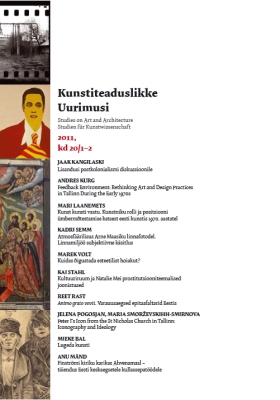Animo grato vovit. Varauusaegsed epitaafaltarid Eestis
Animo grato vovit. Early Modern Epitaph Altars in Estonia
Author(s): Reet RastSubject(s): Fine Arts / Performing Arts
Published by: Eesti Kunstiteadlaste Ühing
Summary/Abstract: This article analyses Estonian ecclesiastical art in the period of transition from Roman Catholicism to Lutheranism. The role of the patronage of the landed nobility in furnishing churches and setting up altars between the late 16th century and the early 18th century is discussed. The noble family immortalised their name and memory by donating an altar, to which coats of arms and inscriptions were added, to a church. The portraits of the donors are featured on the altar of the Keila church; the existence of other portraits is not known. The main subject of the altarpieces under discussion in the Kärla, Keila, Vormsi, Märjamaa and Hanila churches is the Crucifixion. The layout of the altars was influenced by the work of Hans Vredeman de Vries and Cornelis Floris.
Journal: Kunstiteaduslikke Uurimusi
- Issue Year: 20/2011
- Issue No: 01+02
- Page Range: 159-185
- Page Count: 27
- Language: Estonian
- Content File-PDF

